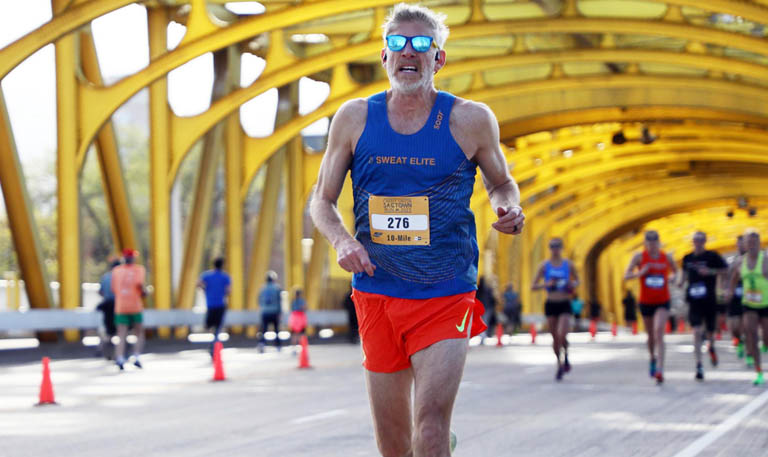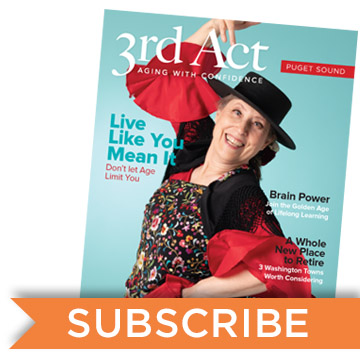Ever since middle school, Anthony ran fast. When he reached his mid-50s, things got interesting.
“In 6th grade, I was second-fastest in our district in the 800-Meters,” says Anthony, who qualified for Junior Olympics that year and finished in the top 20.
He earned a college scholarship to run cross-country, then transferred after his freshman year. Running took a backseat to basketball and weightlifting. Still, he won 200M and 400M intramural races on Hayward Field, Oregon’s iconic track.
After graduation, his running waxed and waned. “In my 30s and 40s, I dabbled in running as part of my overall fitness.”
Then the pandemic happened. Gyms closed. Social distancing became the norm. Running filled a void. “COVID really brought me back to running in my 50s.”
Also, he got faster. Check out his marathon finish times over the years:
| Age | Marathon Finish Time (Hours: Minutes) |
| 31 | 3:47 |
| 37 | 3:32 |
| 55 | 3:46* |
| 56 | 3:29 |
| 57 | 3:15 |
*Finished second in his age group.
Data suggest that a marathon runner will slow down by 35 minutes as he ages from his 30s to 50s. Anthony flipped that trend—he got 32 minutes faster during that period.
He’s also running farther than ever. In his 30s and 40s, Anthony averaged 40 miles per training week. Today, he runs up to 70 miles.
Learning from disappointment
In summer 2021, Anthony was on the verge of a coveted accomplishment, qualifying for the world-famous Boston Marathon.
“I went to Seattle to run the Tunnel Marathon, a downhill course that’s one of the fastest in the country. I was sure I would qualify for Boston,” he explains. “Instead, the day went horribly wrong. I ended up DNF’ing (Did Not Finish) for the first time ever.”
It was the “lowest point” in his running career.
Fortunately, it was short-lived. Two weeks later, he finished a marathon in Santa Rosa. Three months after that he finished another and qualified for Boston. Today, Anthony has two Boston Marathon finishes on his resumé.
“My DNF showed me that I needed to make some changes. I changed virtually everything and now, I’m setting PRs (Personal Records) regularly.”
Here are three important changes Anthony made to his lifestyle:
Strategic training and recovering
“When I was young, I could just run. Now, I do about 20-30 minutes, four to five times per week, of targeted strength and mobility work on my hip flexors, hamstrings, Achilles, and core. My foam roller (nicknamed Rollie) is my best friend. Also, recovery is a priority. After a long run, I take an ice bath, use my compression boots, and take a nap.”
Eating like an athlete
“I make green juice daily, I cut out processed foods, and I rarely drink alcohol. I also intermittent fast, meaning I don’t eat after 6 p.m.”
Embracing technology
“As an older athlete there is nothing more important than monitoring and understanding your body. I use an Apple Watch and an Oura Ring to monitor my sleep, heart rate, and other metrics.” He runs in high-tech, carbon-plated Nike VaporFly shoes.
No slowing down
“Running brings me more joy now than ever,” he says. “My advice is, be willing to change and don’t give up on your dream.”
Mike Harms is an author and coach who is enjoying his third act of designing and building a new personal training studio in his backyard.
PHOTO CAPTION: Anthony running at the USA Track & Field Masters 10-Mile Championships in Sacramento.


